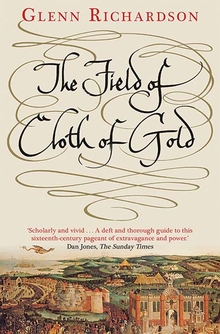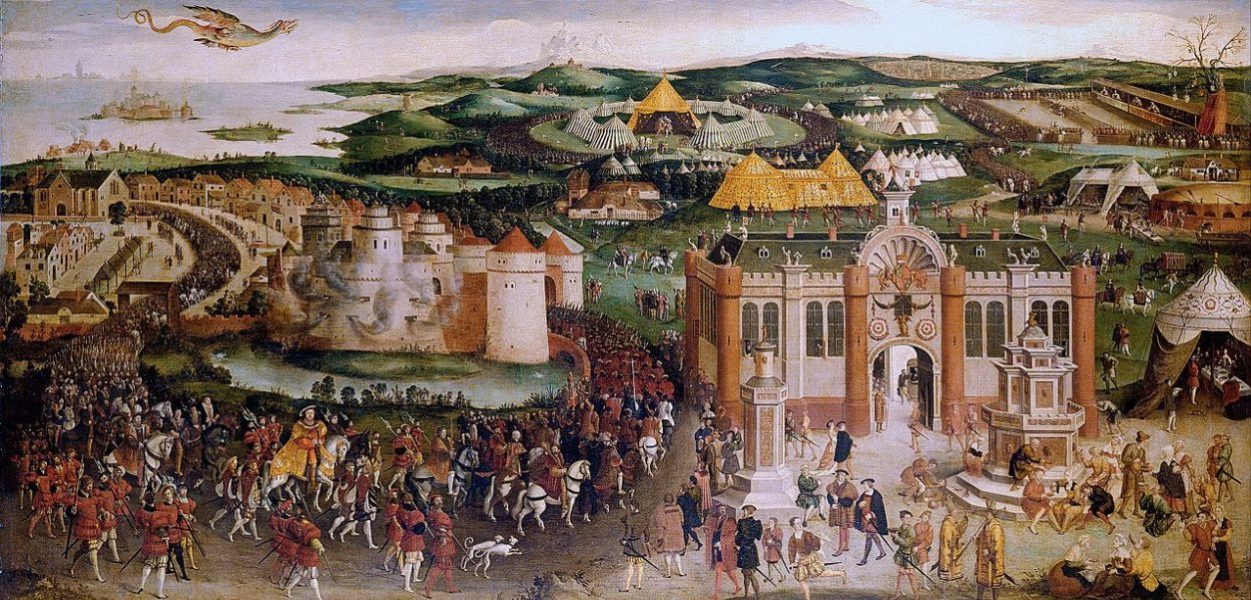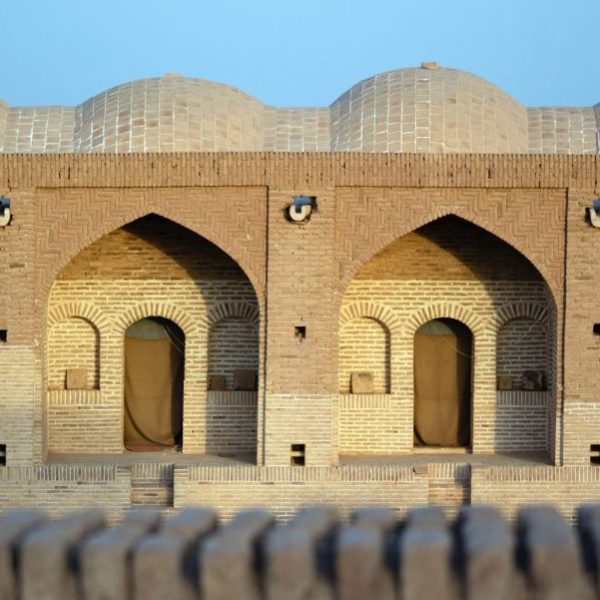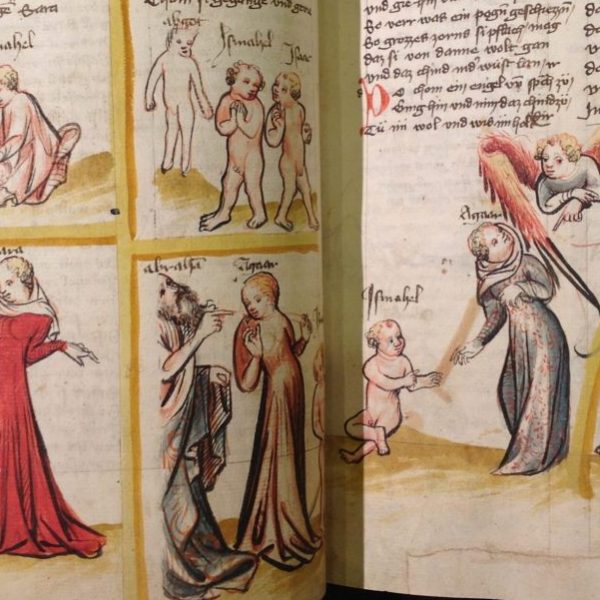International Relations at the Field of Cloth of Gold
Glenn Richardson—
That the Field of Cloth of Gold did not bring in its wake a universal peace of Christendom to match the high-flown rhetoric of the occasion does not prove insincerity on every side, nor that such ambitions were not serious – as has been the traditional reason for describing it as inconsequential.
Henry and Francis were not committed to war with each other in 1520 but neither were they committed to peace with each other purely for its own sake. In 1520 Henry and Wolsey were doing through this event what they had done through Mary Tudor’s marriage to Louis XII in 1514 and in the lavish entertainments provided for the French ambassadors who had come to London in 1518 to conclude the treaty of Universal Peace. For Henry, the Field was an offer of peace matched with a warning that if Francis broke the rules of the treaty so favourable to the king of England, he would be attacked. For his part, Francis offered peace and alliance with Henry as the price for his co-operation in allowing the English king any effective role in Europe beyond the boundaries of his island domain. His threat was to leave Henry isolated and marginalised if he broke the agreement between them. In 1520, Francis was also doing again what he had done at the end of 1518. He welcomed Englishmen to France and entertained them as supporters of his own claims to international prominence as the victor of Marignano and natural leader of Christendom. Francis was genuinely hopeful that his offer of friendship would be accepted by Henry on the basis that, at the Field, he also showed him his strength and determination to be the king of France in deed as well as name. He was frustrated by Henry’s evident reluctance to commit himself. Hence the dramatic early-morning visit he made to Henry, designed at once to disarm and to persuade, to disconcert and to reassure his rival. Henry’s decision to ally with Charles V came a year after this event and only after Francis launched a pre-emptive strike against the emperor in 1521. It was prompted by the realisation that, for all Henry’s posturing as international arbiter, he could not finally prevent a Franco-Habsburg war and had better ensure that he was on the winning side.
In focusing attention on the kings in the way it did, the Field achieved its intended purpose for each of them. It is perhaps pointless seeking to find the type of ‘outcome’ or ‘consequence’ of the encounter that would satisfy the dictates of conventional ‘diplomatic history’ and render the meeting ‘significant’ in those terms. In this it has much in common with other historical ‘summit’ meetings of the past and those of our own time. With their jousting, dancing and the like at the Field of Cloth of Gold, Henry and Francis can seem very remote from the ways of our own world leaders – and indeed in many ways they are. Yet, despite the manifest changes in the institutions and practices of government and society since the sixteenth century, the fundamentals of communication between contemporary national leaders are perhaps in essence not so different from those of the Field. Nor are the politics of display as remote from us as we might imagine. Some of the most important decisions or shifts in patterns of international relations of the twentieth century were initiated in high-profile ‘summit’ meetings, of which the Field was a Renaissance forerunner.
The outcomes of the Tehran, Yalta and Potsdam conferences at the end of the Second World War were strongly informed by the personalities and interactions of Stalin and Churchill, Roosevelt, Truman and Attlee. With some justification, Richard Nixon described his personal visit to China in February 1972 and his meeting with Mao Tse-Tung as ‘the week that changed the world’. His visit, prearranged through a series of secret discussions conducted by Henry Kissinger in 1971, initiated the normalisation of relations between the United States of America and the People’s Republic of China after two decades of mounting tension. The freeing up of these relations had implications for the position of the Soviet Union and preceded by only a few years the dramatic economic reforms initiated by Deng Xiaoping. Their ramifications are still working themselves out in the early twenty-first century. In 1986 another summit, between Ronald Reagan and Mikhail Gorbachev, at Reykjavik in Iceland, also ‘changed the world’. Although the conference itself was described as a failure due to a breakdown in talks, it nevertheless began a process of arms reduction between the superpowers and better relations between them – despite Reagan’s stridently anti-Soviet rhetoric. It is arguable that the perceived reduction in the threat posed as a result of the arms agreements played its part in allowing Gorbachev’s reform programmes of glasnost and perestroika to take hold, with profound implications for the Soviet Union and the rest of the world.
As Sir Christopher Meyer, the former British ambassador in Washington, observed in his memoirs of his time there, the personal mode of dealing between leaders is still, today,
the meat and drink of everyday relations between states; and it cannot be carried out at several thousand miles’ range. It needs people on the spot: feet on the ground, faces across a table, a tennis court, on a golf course, eyeball to eyeball . . . It is the normal practice of great multinational corporations.
One could add, in reference to the sixteenth century, ‘on a tournament field and in a banqueting hall’. In other words, it is now a commonplace of early-modern cultural history to observe that the size of a king’s retinue, the lavish hospitality he provided for his guests and his personal demeanour with them were all crucial elements in displaying a winning magnificence which expressed his personal power. Nevertheless, in the end, the explanation for the Field of Cloth of Gold need not be any more, or less, complicated than this.
Contrary to the general assumption, the encounter in 1520 was not intended primarily to be a celebration of Anglo-French peace which neither side believed in and which was ruined by irrepressible rivalry. Neither was it merely two weeks of wasted time and money with no purpose other than entertainment for its own sake. Nor yet was it a deliberate deception of the French designed to mask Henry VIII’s ‘real’ intention, already decided upon, of allying with Charles V against Francis I. The meeting is best understood as a ‘field’ in the sixteenth-century senses of the word: a place, an event and a battle. It was literally and metaphorically a war game which depended on spectacle for success. It was a very conspicuous piece of royal Renaissance ‘self-fashioning’, of ostentatious material display and political theatre, designed to present the power of monarchy in a dynamic and compelling way. Ultimately, the meaning of the event is declared by its name – the Field of Cloth of Gold.
From The Field of Cloth of Gold by Glenn Richardson. Published by Yale University Press in 2020. Reproduced with permission.
Glenn Richardson is professor of early modern history at St. Mary’s University, London.
Further Reading:



























